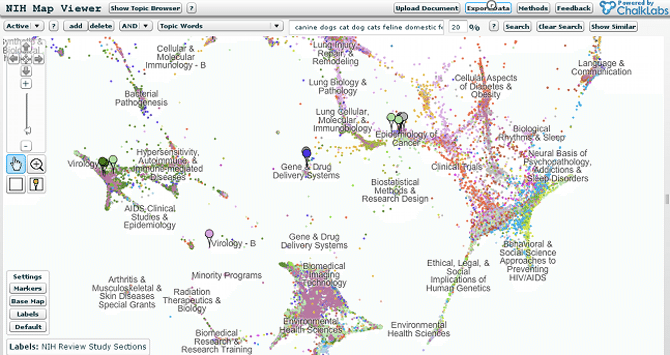National Institutes of Health Case Study

In 2009, ChalkLabs was hired to help the National Institutes of Health (NIH) analyze their $26 BN portfolio of grants. The NIH wanted to learn more about which institutes were performing what types of research and if there were gaps or overlaps in funding, research, and personnel. They wanted to do this in a way that captured the semantics across subject areas regardless of the title of a given grant.
In order to accomplish these goals, ChalkLabs created a novel portfolio analysis tool whereby administrators, analysts, or researchers can quickly search, navigate, cross-reference, visualize, and export their large-scale data analyses in a web-based, real-time, easy-to-use, intuitive fashion. Rather than simply searching for keyword matches, our portfolio analysis finds thematic and semantic similarities, allowing users to access a broader and more thorough view of their data.


